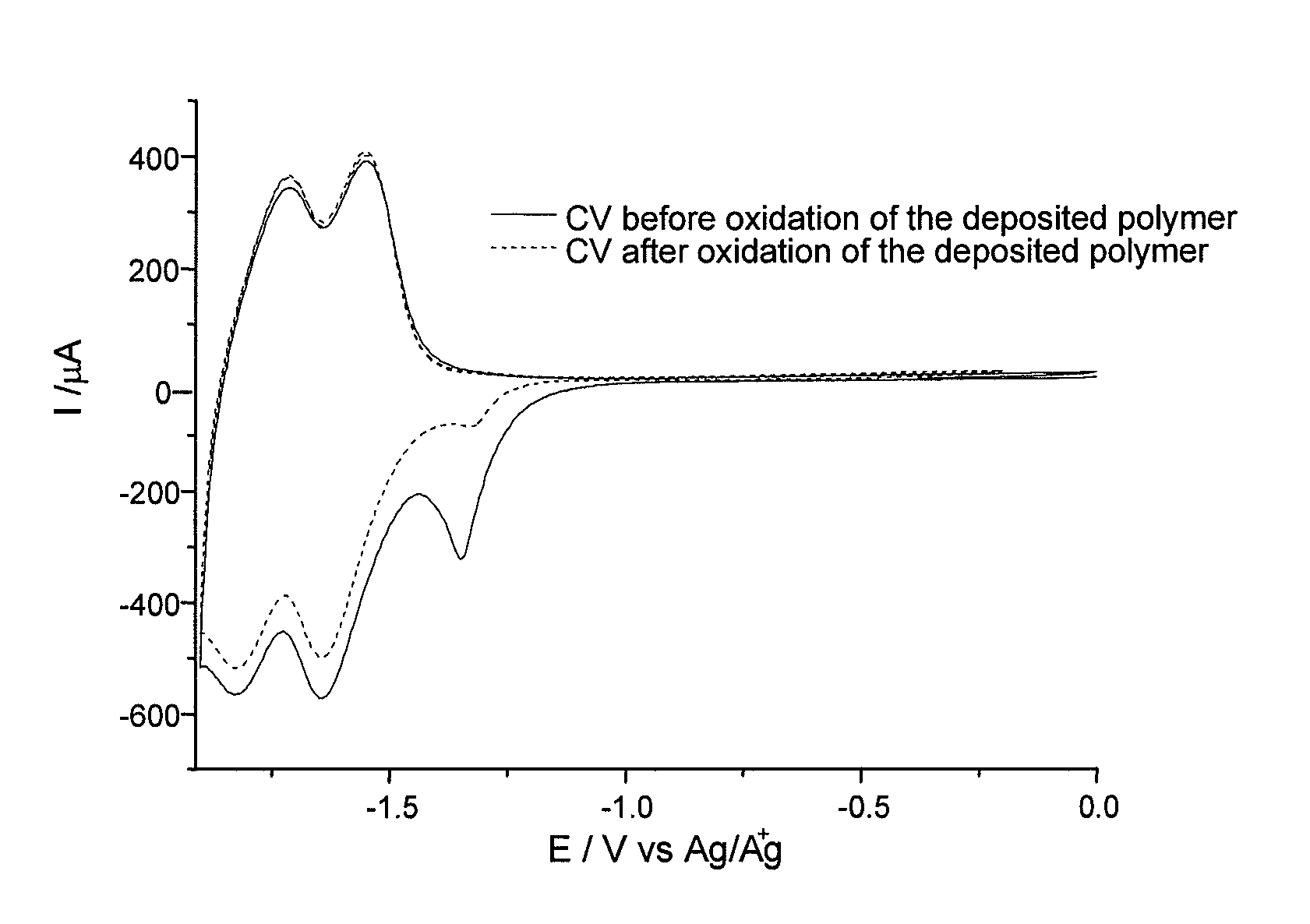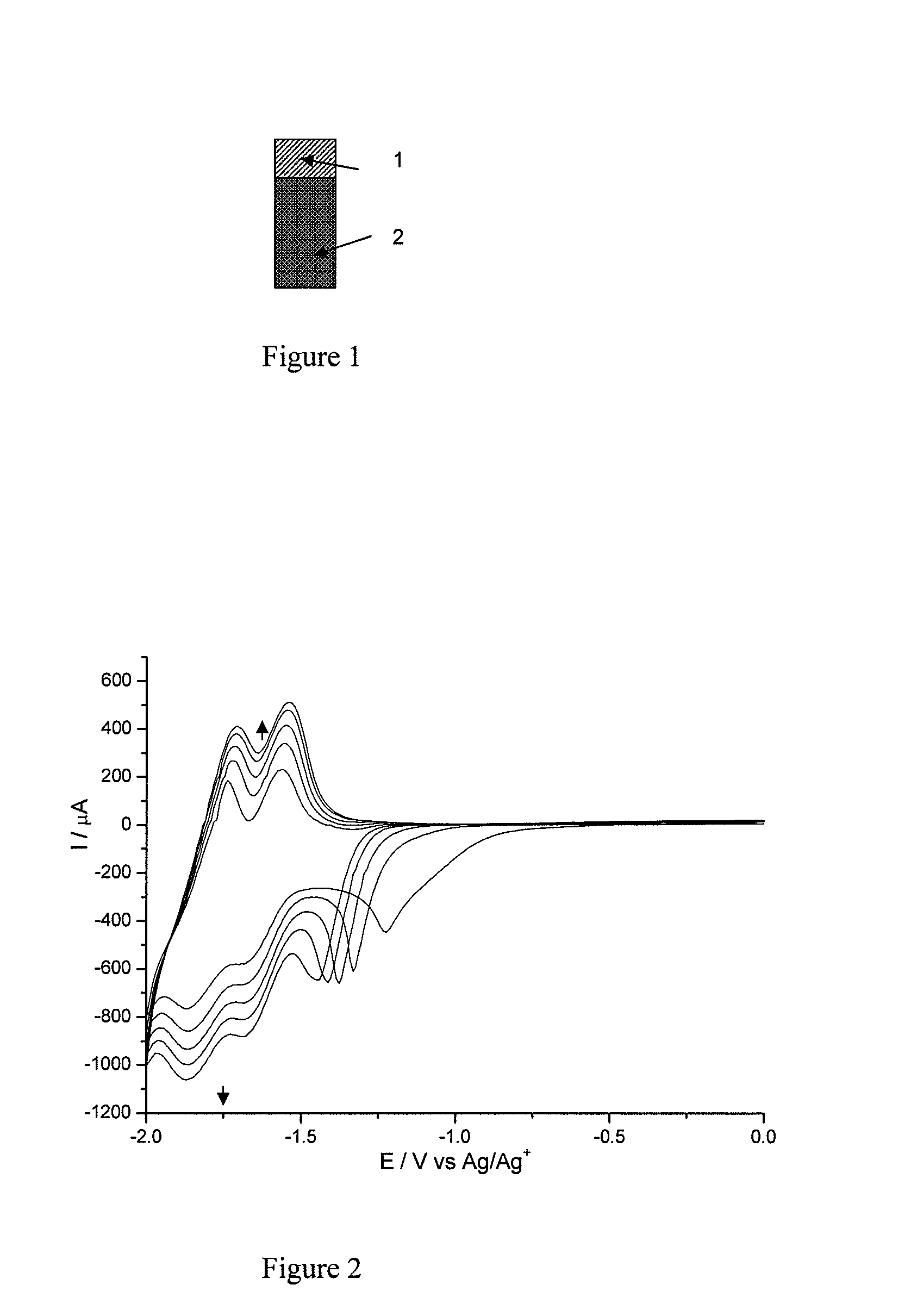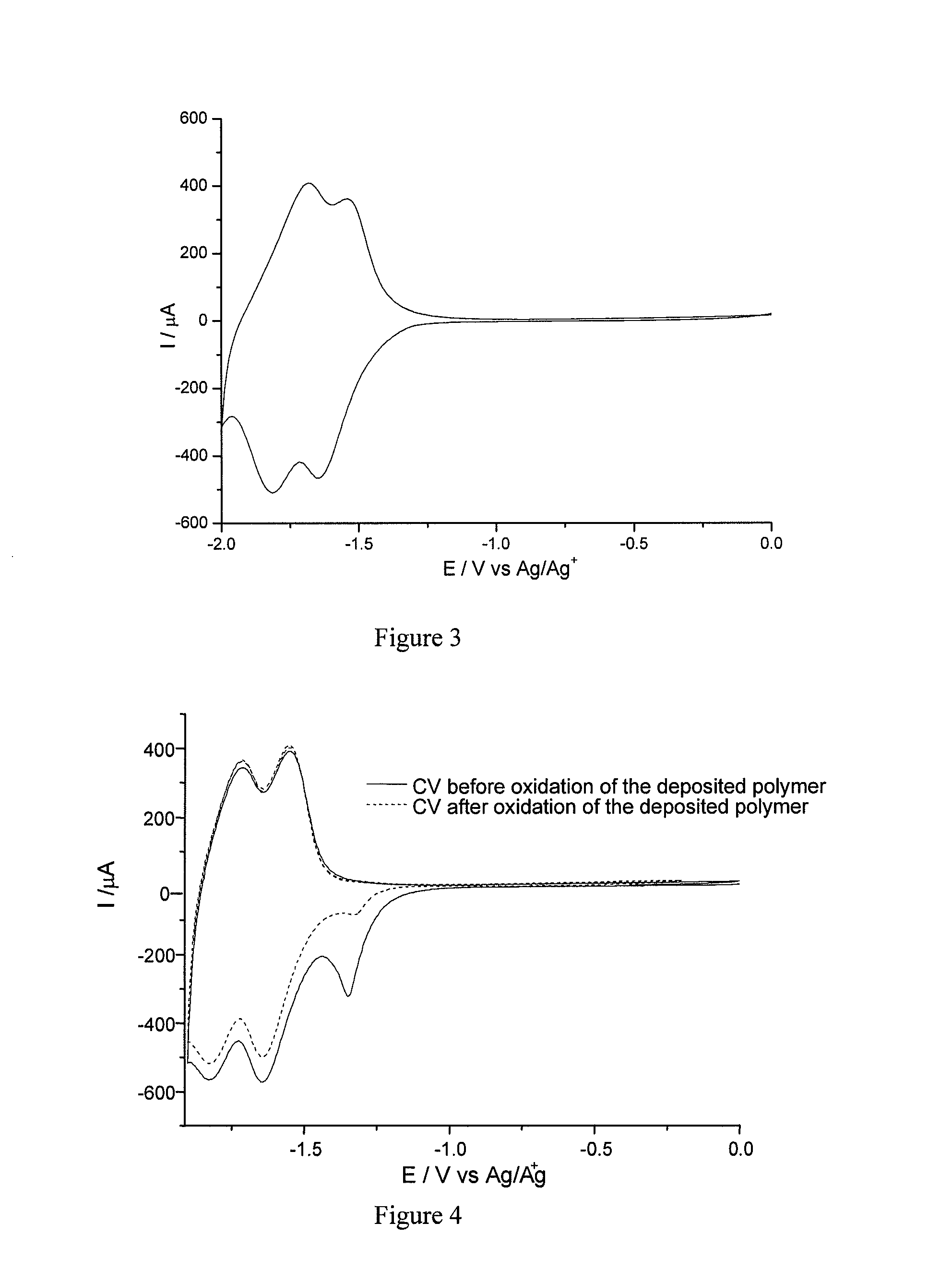Polymerizable diazonium salts, process for the preparation thereof and uses thereof
a technology diazonium salt, which is applied in the field of polymerizable diazonium salt, process for the preparation thereof, can solve the problems of not being able to absorb the entire intensity of the solar spectrum, using the liquid electrolyte isub>3/sub>/isup>, and difficult to obtain completely hermetic cells
- Summary
- Abstract
- Description
- Claims
- Application Information
AI Technical Summary
Benefits of technology
Problems solved by technology
Method used
Image
Examples
example 1
Synthesis of the Diazonium Salt of Formula I-15: [Ru(bipyridine)2(bipyridinephenyl-N2+)][PF6−]3
[0130]The compound 4′-(4-aminophenyl)-2,2′-bipyridine required for the preparation of the diazonium salt of Formula I-15 was synthesized in several steps according to the literature.
Step 1: Synthesis of [Ru(bipyridine)2(bipyridinephenyl-N2)][PF6]2
[0131]A solution of 4′-(4-aminophenyl)-2,2′-bipyridine (200 mg, 0.81 mmol) and of Ru(bipyridine)2Cl2.2H2O (392 mg, 1 eq.) in ethanol (200 ml) is degassed and refluxed under an inert atmosphere (N2) in the dark for 20 hours. The solution is then cooled and the residue is chromatographed on a silica gel (eluent: CH3CH / H2O / saturated aqueous KNO3 solution, 40:4:1). The fractions containing the product are combined and an excess of NH4 PF6 is added. The acetonitrile is then evaporated off and the red solid obtained is filtered, and washed with water and ether ethyl to give [Ru(bipyridine)2(bipyridinephenyl-NH2)][PF6]2 in the form of a red solid (540 ...
example 2
Electrografting of the Diazonium Salt Obtained in Example 1 Onto a Narrow-band (n-doped Silicon) Semiconductor Electrode
[0141]A conventional three-electrode electrochemical assembly: working electrode, reference electrode and counter electrode, is used.
[0142]FIG. 1 represents the electrode onto the surface of which the diazonium salt obtained in Example 1 will be covalently grafted. This electrode has a chromium-gold contact block, noted 1 in FIG. 1, which ensures good conduction with the n-doped silicon, noted 2 in FIG. 1, and makes it possible to take a point of contact in order to perform the electrografting.
[0143]Before the electrografting, the silicon electrodes are soaked for one minute in a 1% solution of hydrofluoric acid (HF), and then in water, and finally in isopropanol in order to remove the layer of native oxide and to obtain a hydrogenated silicon surface.
[0144]The working electrode is then immersed in a degassed acetonitrile solution comprising an electrolyte (LiClO4,...
example 3
Electrografting of the Diazonium Salt Obtained in Example 1 Onto a Wide-band Semiconductor (ZnO)
[0152]The procedure was carried out as in Example 2 above, but using ZnO electrodes.
[0153]The cyclic voltammetry curves obtained are identical to those obtained in Example 2.
[0154]This example shows that it is possible, by virtue of the diazonium salts of the invention, to electrofunctionalize wide-band semiconductors, which had never been done in the prior art.
PUM
| Property | Measurement | Unit |
|---|---|---|
| Thickness | aaaaa | aaaaa |
| Electrical conductor | aaaaa | aaaaa |
| Semiconductor properties | aaaaa | aaaaa |
Abstract
Description
Claims
Application Information
 Login to View More
Login to View More - R&D
- Intellectual Property
- Life Sciences
- Materials
- Tech Scout
- Unparalleled Data Quality
- Higher Quality Content
- 60% Fewer Hallucinations
Browse by: Latest US Patents, China's latest patents, Technical Efficacy Thesaurus, Application Domain, Technology Topic, Popular Technical Reports.
© 2025 PatSnap. All rights reserved.Legal|Privacy policy|Modern Slavery Act Transparency Statement|Sitemap|About US| Contact US: help@patsnap.com



